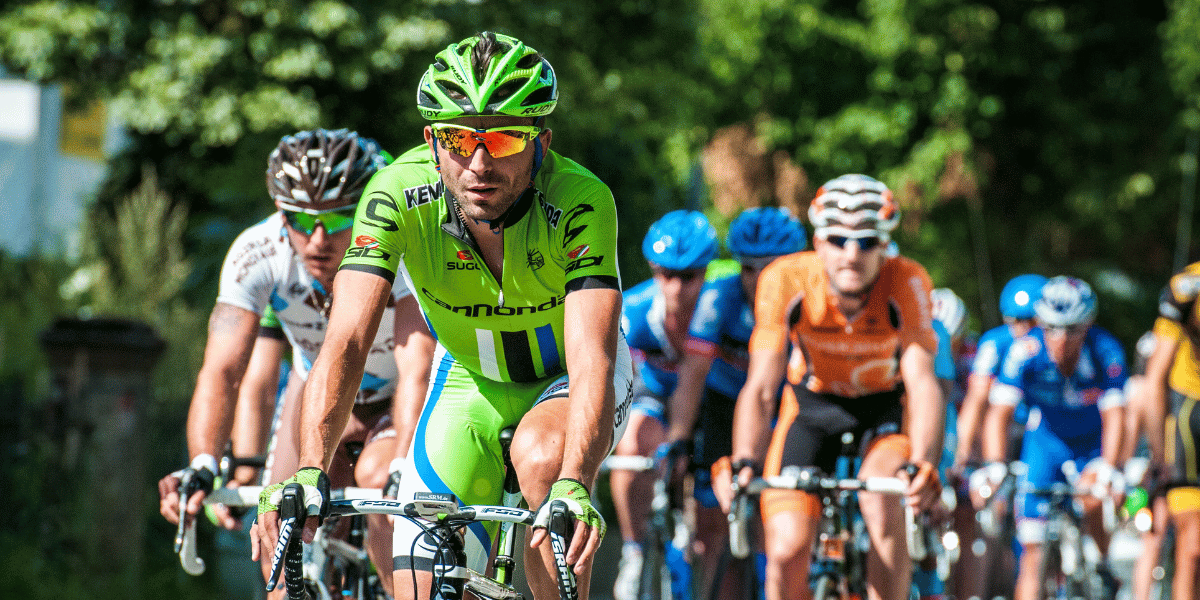Cycling is more than just a way to get from one place to another; it’s a multifaceted form of exercise that caters to people of all ages and fitness levels. With the wind in your hair and the pedals under your feet, bicycling can be a leisurely pastime, an intense cardiovascular workout, or even a competitive sport.
The beauty of cycling is in its adaptability; whether you’re on a serene trail or pushing your limits on a steep incline, bicycling offers a complete workout that can be tailored to your goals and interests.
Physical Health Benefits of Cycling
Cardiovascular Improvements
Cycling is an excellent way to increase your heart rate, strengthen your heart muscles, and improve your overall cardiovascular health. Consistent cycling has been linked to a reduced risk of heart disease, high blood pressure, and stroke.
Muscle Building and Toning
As you pedal against resistance, cycling engages the muscles of the lower body, particularly the quadriceps, glutes, hamstrings, and calves. Not to be overlooked, the core and arm muscles also get a workout, helping to build a balanced, toned physique. When coupled with a ketogenic diet, such as Ideal Protein, results can happen quickly.
Weight Management and Fat Loss
Cycling burns calories and helps in weight control. It’s an efficient way to combine aerobic exercise with muscle-building, which together can boost your metabolism, aiding in long-term weight management and fat loss.
Joint Mobility and Health
Being a low-impact exercise, cycling is gentle on the joints, making it a suitable exercise option for those with joint concerns or conditions like arthritis. It helps maintain or improve joint mobility without the stress that activities like running can impose.
Improved Coordination and Balance
Navigating a bike requires a certain level of coordination and balance, which can enhance these skills over time. These benefits not only contribute to a better cycling experience but also translate into everyday life activities.

Mental Health and Well-being
Stress Reduction and Mental Clarity
Cycling has been shown to reduce stress levels, thanks to the combination of physical activity, outdoor exposure, and the opportunity for contemplative solitude or engaging social interaction. It also promotes mental clarity, allowing you to focus and clear your mind.
Mood Enhancement and Endorphin Release
Physical exercise, such as cycling, stimulates the release of endorphins, often referred to as the body’s “feel-good” chemicals. Regular cyclists often report enhanced mood and a general sense of well-being. This is one of the many reasons bicycling is beneficial while in rehab and recovery.
Cognitive Function and Memory
Engaging in regular physical activity, including cycling, can improve cognitive function and has been linked to better memory and protection against cognitive decline with age.
Sleep Quality and Relaxation
Cycling can help regulate your body’s circadian rhythm and reduce levels of cortisol, a stress hormone that can interfere with sleep. Consequently, it can improve the quality of your sleep and help you relax more effectively.
Connection to Nature and Environment
Riding a bike outdoors offers a unique opportunity to connect with nature, which can have restorative effects on mental health. This connection often enhances environmental awareness and appreciation for the surroundings.
Cycling as a Lifestyle Choice
Incorporating Cycling into Daily Routines
Cycling can easily be woven into your daily life. Consider cycling to work to jumpstart your day or taking a bike ride after dinner to unwind. Even errands can be transformed into an opportunity to pedal, combining productivity with fitness.
The Social Aspects of Cycling with Groups or Clubs
Joining a cycling group or club can enrich your bicycling experience. It’s a way to meet like-minded individuals, share tips, learn new routes, and participate in social events. Group rides can also boost motivation and provide a sense of community.
Environmental Impact and Sustainable Living
Choosing a bike over a car for daily commutes can significantly reduce your carbon footprint. Cycling is a clean mode of transportation that contributes to reduced traffic congestion and air pollution, promoting sustainable living.
Longevity and Lifelong Activity
Cycling is an activity that can be enjoyed at any age, contributing to a healthier, longer life. It’s gentle on the body, making it a sustainable choice for maintaining fitness throughout your life.
Nutrition and Hydration for Cyclists
Eating for Energy: Pre- and Post-Cycling Nutrition
Proper nutrition is crucial for bicycling performance and recovery. Before a ride, focus on carbohydrates for energy, and after, prioritize protein to aid muscle recovery. Always balance your meals with healthy fats and a variety of vitamins and minerals for overall health.
Hydration: How Much and How Often?
Staying hydrated is essential for cyclists. The amount of water needed depends on the duration and intensity of the ride and environmental conditions. A good rule of thumb is to drink water before you’re thirsty, ideally sipping small amounts every 15 to 20 minutes.
Supplements and Natural Food Choices for Endurance
For longer rides, you may need additional energy from supplements like energy gels or bars. However, natural foods like bananas, nuts, and whole grains can also provide the sustained energy needed for endurance cycling.
Overcoming Challenges and Safety Tips
Tips for Starting a Cycling Routine
Starting small and gradually increasing the distance and intensity of your rides is key. Ensure your bike is the right fit and that you’re comfortable with the basics of cycling before advancing to busier routes or challenging terrains.
Overcoming Common Obstacles to Consistency
Life can get busy, and it can be challenging to stick to a cycling routine. Plan your week in advance, set realistic goals, and if you miss a ride, don’t be hard on yourself—just get back on the bike when you can.
Safety Gear and Best Practices
Invest in a quality helmet, reflective clothing, and lights for your bike. Follow traffic laws, signal your turns, and always be alert. Learning basic bike maintenance can also keep you safer on the road.
Staying Motivated and Setting Achievable Goals
Set achievable cycling goals to stay motivated. Whether it’s a certain number of rides per week, a longer distance, or participating in a bicycling event, having something to strive for can keep your cycling journey on track.

Advanced Cycling for Health
High-Intensity Interval Training (HIIT) on a Bike
For those looking to take their fitness to the next level, HIIT cycling sessions can be a game-changer. These workouts alternate between intense bursts of activity and fixed periods of less-intense activity or complete rest. This type of training can boost metabolism, improve cardiovascular health, and increase fat-burning potential.
Long-Distance Cycling: Benefits and Challenges
Embarking on long-distance rides can be a true test of endurance and mental fortitude. It’s not only an excellent way to improve physical stamina, but it also offers a sense of achievement and adventure. Preparing for long distances requires careful planning and training, but the health payoffs are substantial.
Off-Road and Mountain Cycling for Increased Fitness
For those who prefer rugged terrain, off-road and mountain cycling present an excellent opportunity to build strength, improve bike handling skills, and enhance cardiovascular fitness. This type of bicycling provides a dynamic environment that can challenge your body in new ways.
Conclusion
To summarize, cycling is an accessible, enjoyable, and multifaceted form of exercise that supports both physical and mental health. It’s a lifestyle choice that can adapt to personal goals and preferences, offering everything from a relaxing pastime to an intense physical workout. Whether you’re looking for a way to improve your health, connect with others, or reduce your environmental impact, bicycling offers a wealth of benefits.
Now it’s your turn! We invite you to share your cycling stories, or if you haven’t started yet, why not make today the day you begin your cycling journey? Connect with local cycling communities, discover events, and find companions who share your interest in this healthy, fulfilling activity. Get out there, start pedaling, and see where the journey takes you!

